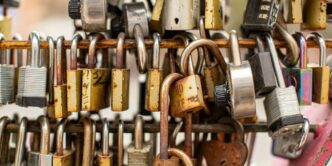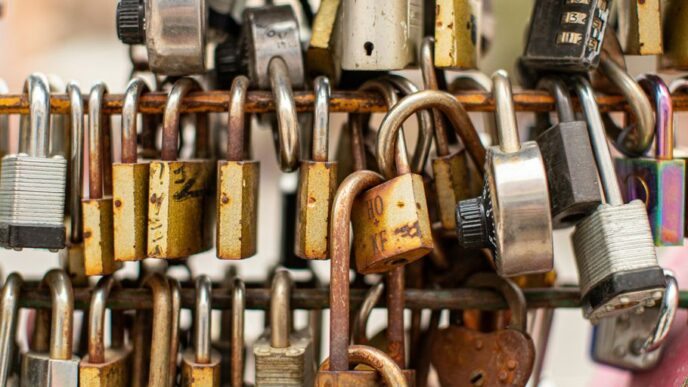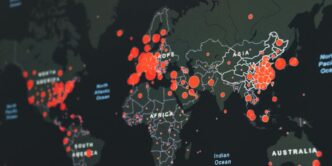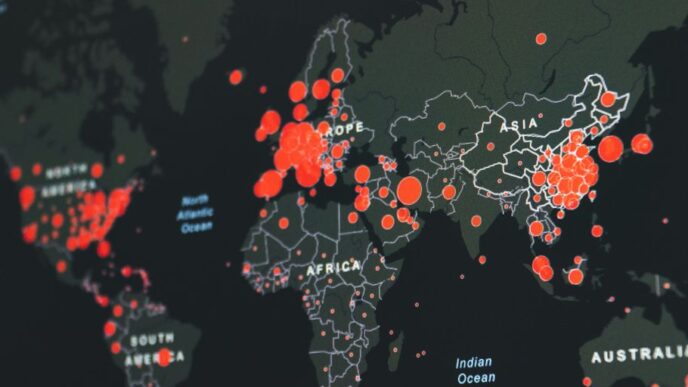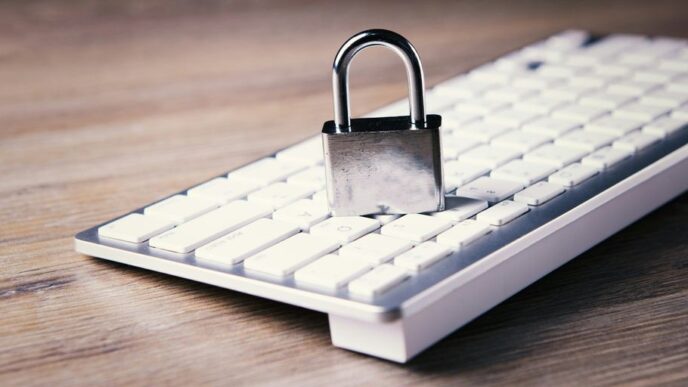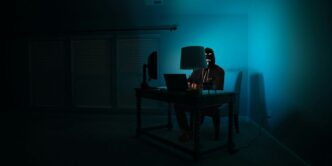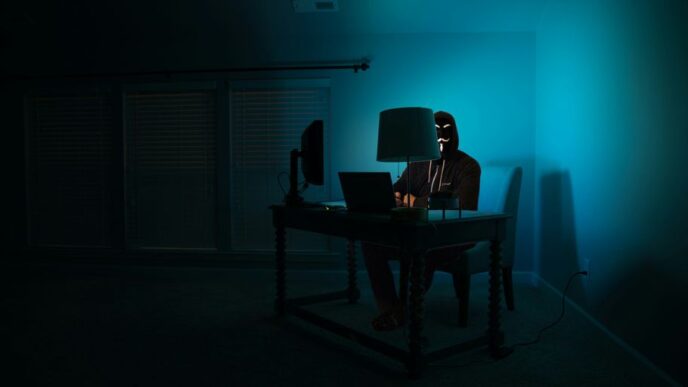Welcome to the depths of the internet’s underbelly – the enigmatic and mysterious realm known as the Dark Web. A place where anonymity reigns supreme, illicit activities flourish, and danger lurks around every corner. Brace yourself as we embark on a riveting journey to unveil the hidden dangers that lie within this secretive digital underworld, while equipping you with crucial knowledge on how to navigate its treacherous waters. Whether you’re an intrigued explorer or simply seeking insights into maintaining your online safety, join us as we shine a light on the Dark Web and shed light on staying one step ahead of its threats.
What is the Dark Web?
The dark web is a part of the internet that can only be accessed using special software, making it hidden from most internet users. It’s a place where illegal activities such as drug dealing and money laundering take place, and where personal information is bought and sold without the consent of the people involved.
While the dark web sounds dangerous, it’s important to remember that not all of it is illegal. In fact, there are many legitimate uses for the dark web, such as academic research and whistle-blowing. However, because of its anonymous nature, it’s also a place where criminals can operate with relative impunity.
If you’re thinking of exploring the dark web, it’s important to do so with caution. Make sure you have strong security measures in place, such as a VPN, and be careful about what websites you visit. Remember, once you go onto the dark web, it can be very difficult to come back out.
Dangers of the Dark Web
When venturing into the dark web, it is important to be aware of the dangers that lurk there. While the dark web can be a place to find information and engage in anonymous communication, it is also home to a number of criminal activities. These include but are not limited to:
-Possession and distribution of child pornography
-The sale of illegal drugs and other contraband
-Terrorist activity
-Fraudulent activity such as identity theft and credit card scam
In addition to the criminal activity that takes place on the dark web, there are also a number of security risks. Because of the anonymous nature of the dark web, it is difficult to track down criminals who operate there. Furthermore, many of the websites on the dark web are not encrypted, which means that your personal information could be at risk if you visit them. Because the dark web is not indexed by search engines, it can be hard to find reliable information about what is happening there.
Despite the risks, some people choose to venture into the dark web in order to find information that they cannot find anywhere else. If you do decide to explore the dark web, there are some steps you can take to stay safe. First, only visit websites that you trust. Second, use a VPN or proxy server to protect your identity. And third, be sure to have antivirus software installed on your computer. By following these safety precautions, you can help reduce your risk of being
How to Keep Safe on the Dark Web
The Dark Web is a dangerous place. There are many things that can go wrong when you are browsing the dark web, and it is important to be aware of the risks before you begin. Here are some tips to help you stay safe while browsing the dark web:
- Use a VPN: A VPN will encrypt your traffic and hide your IP address, making it much more difficult for someone to track you or steal your information.
- Use Tor: Tor is a browser that allows you to browse the internet anonymously. It is very important to use Tor when accessing the dark web, as it will help to keep your identity hidden.
- Be careful what you click on: The dark web is full of scams and malicious websites. Be very careful what you click on, and only visit websites that you trust.
- Don’t download anything: Many files on the dark web contain viruses or other malicious software. Don’t download anything from the dark web unless you are absolutely sure it is safe.
- Keep your security software up to date: Having up-to-date security software is important for protecting yourself from malware and other threats lurking on the dark web. Make sure your antivirus and anti-malware software is always up to date.
By following these tips, you can help keep yourself safe while browsing the dark web. Remember, however, that even with these precautions in place, there are still
Common Risks in Websites & Browsers
There are many risks associated with using the internet, especially when it comes to revealing personal information. However, there are some common risks that are specific to websites and browsers. Here are a few of the most common risks:
- Malware: Malware is a type of software that is designed to damage or disable computers. It can be spread through email attachments, downloads, or even by simply visiting an infected website. Once installed on a victim’s machine, malware can launch attacks, steal sensitive data, or even take control of the machine entirely.
- Phishing: Phishing is a type of online fraud that involves tricking victims into revealing sensitive information such as passwords or credit card numbers. Phishers typically use fake emails or websites that mimic legitimate ones in order to lure their victims.
- Adware & Spyware: Adware and spyware are types of software that display advertising content or track a user’s web activity without their knowledge or consent. These programs can be installed on a computer without the user’s knowledge and can be difficult to remove once they are present.
- Browser Hijacking: Browser hijacking occurs when a malicious piece of software takes over control of a web browser and alters its settings without the user’s permission. Common symptoms of browser hijacking include changes to the homepage or search engine settings, unexpected new toolbars or plugins, and redirected web searches.
- Cross-site Scripting (XSS): XSS attacks are a type of attack in which malicious code is injected into legitimate webpages. This can result in the user’s browser executing the malicious code, allowing attackers to gain access to sensitive data or perform other malicious activities.
Preventative Measures to Take
The Dark Web is a dangerous place full of criminal activity. To stay safe, it’s important to take some preventative measures. Here are a few things you can do:
- Use a VPN
When accessing the Dark Web, it’s important to use a VPN in order to stay anonymous and protect your identity. There are many free and paid VPN options available, so choose one that fits your needs.
- Be Careful What You Click on
There are many scams and malware lurking on the Dark Web. Be careful what you click on, and only download files from trusted sources. If you’re not sure whether something is safe, don’t click on it!
- Use Security Software
Make sure you have security software installed on your computer before accessing the Dark Web. This will help protect you from malware and other threats.
Cybersecurity Tips & Best Practices
When it comes to the internet, there are two sides to every coin. While the surface web offers a wealth of information and resources, the dark web is a much more dangerous place. This hidden side of the internet is full of criminal activity, ranging from drug trafficking and money laundering to identity theft and terrorism.
Despite its unsavory reputation, the dark web does have its uses. In some cases, it can be a valuable resource for investigative journalists or government agents working undercover. It can also be a safe haven for whistleblowers and dissidents in repressive regimes.
However, for the average person, venturing into the dark web is not worth the risk. There are many ways to accidentally stumble into criminal activity, and it is very difficult to stay anonymous on this side of the internet. If you do find yourself on the dark web, there are some steps you can take to stay safe:
- Never reveal your true identity. Use a pseudonym or alias at all times, and avoid sharing any personal information that could lead back to you in real life. This includes your home address, email address, phone number, etc.
- Be careful what you click on. Many links on the dark web lead to malicious websites or downloads that can infect your computer with viruses or give criminals access to your personal data. Only click on links from trusted sources and be sure to have up-to-date anti-virus software installed on your computer.
Conclusion
The Dark Web is an intimidating and dangerous place, but it doesn’t have to be. With the right precautions and tools, you can use the Dark Web for benign activities without worrying about your safety or security. Just remember that using caution when exploring the dark web is always a must, since its potential for misuse remains high regardless of how diligent you are in protecting yourself online. With research, preparation and dedication to staying safe, venturing into this unknown realm will be less daunting – so take a deep breath and dive right in.


